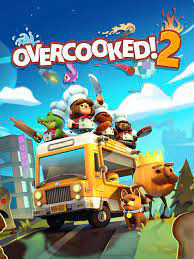
Since the days of the Atari and the NES, movie-based video games usually aren’t the most successful, often bogged down by attempts to add in mechanics that feel like the film or by poor voice acting. There are exceptions, such as the popular Star Wars: Knights of the Old Republic (2005), but they typically aren’t bestsellers.
If you look at a film like Alien (1979), it seems like it would make a great video game, and there had been attempts throughout the run of the franchise to make one, starting with Alien (1982) for the Atari 2600. Alien 3 (1992) for the NES was generally well-received, as was the Alien Trilogy (1996) for the PlayStation.
However, the 2013 release of Aliens: Colonial Marines was met with extreme critical disdain and fan backlash, for several odd decisions and tons of bugs at launch, and the game remains pretty unpopular to this day.
It was the following year that Creative Assembly released Alien: Isolation, a first-person survival horror game in the vein of Ridley Scott’s original film, rather than Aliens, which most games sought to imitate. The game is based around the player’s encounters with a singular, unkillable alien rather than mowing through hordes of them with a pulse rifle or smartgun.
The game’s story is set 15 years after the original film, which saw the destruction of the Nostromo and left survivor Ellen Ripley drifting through space in an escape pod. Her daughter Amanda (briefly referenced in Aliens) is approached by Weyland-Yutani agents with an offer to go to the space station Sevastopol, where it is said that the Nostromo’s flight recorder is being kept. In an effort to find closure, Amanda tags along, but as luck would have it, not all is right on Sevastopol… and an alien might not be the only problem.
While nothing groundbreaking, the story works well as a way to kick off the horror. Save for the first half hour of the game, it gets the ball rolling very quickly and doesn’t waste a second. Yet what works so well about the story is that it isn’t a massive, universe-shattering plot. It is a relatively street-level, kind of small-scale Alien story that works well alongside the events that we know from the films. But if anything else, the story takes a backseat to the survival-horror element that the game does so well.
Part of the appeal of Isolation is the (at the time) groundbreaking alien AI. Creative Assembly built an engine specifically for the alien, so that every encounter would be different throughout the game. It runs on a complex detection system (one that has been extensively analyzed in countless articles and YouTube videos) that creates a realistic opponent that adapts to what the player does. For example, about midway through the game you gain access to a flamethrower which can be used to send the alien back into the ventilation shafts (if there are any nearby) for a brief moment. Yet if you use it, the alien becomes more aggressive and will return to the last place it saw you and start to actively hunt you, whereas before it was just searching the area. Putting the difficulty up will increase the alien’s ability to see the player from larger distances and decrease the time it takes for the alien to guess that the player is hiding under something or in a locker. Encounters become a matter of “if” and “how”, rather than “when”. It creates an undeniably tense atmosphere, no matter the difficulty level.
There are other enemies aboard Sevastopol, being hostile human survivors and rogue androids, called “Working Joes”. Both can be countered and defeated, though the game suggests that you sneak around these enemies because combat can and will attract the alien. The story provides interesting and believable reasons for these additional threats to be aboard the station, and creates more tense scenarios that change up the gameplay loop here and there.
Alongside the revolutionary alien engine, the other great aspect of the game is the graphics and sound design. It was designed to look and feel like the original film, and despite being ten years old, it still looks incredible. Environments are rich in their coloring, gas spews from vent shafts as you pass under them, light from adjacent planets shine through windows and create deep shadows that you can hide in. The game is played in a first person perspective, but looking down reveals Amanda’s legs which move according to the player’s movements. The one dated side might be the character face models, which don’t look the greatest, but cutscenes are very short and the game doesn’t draw much attention to it.
The sound design is where the panic really sets in: in the original film, the alien moves silently through vent shafts and drops down behind the characters with ease, but here the alien is quite loud as it crawls and drops down. What it creates is not a jumpscare, but actual tension when you almost know the alien’s precise location but are forced to wait behind a crate or under a table as it walks past. Playing the game with headphones makes the experience all the more immersive. Footsteps, NPC dialogue, the movement of machinery, the beeping of save terminals, all makes an environment that feels lived in and real. While this is almost a given for next-generation games, Isolation was released at the start of the PS4’s lifespan and created a new standard. It is hard to explain without beating a dead horse; the best way to experience this is to pick up the game and play it for yourself.
In 2014, Isolation released to generally positive reviews, with critics universally lauding the graphics, sound, and AI intelligence, but with a lot of criticism going toward the length of chapters and the game’s difficulty. It raises an interesting retrospective question: why are horror games horror games? How does the game terrify the player and leave them on the edge of their seat? Isolation is a long, grueling, sometimes tedious experience. The second half of the game is full of backtracking through earlier levels and taking on more powerful humans and androids. A section forces the player to turn in their weaponry and then face off against androids that are immune to EMP mines, and the fan favorite (not) level features Amanda traveling through a darkened medical bay, with no save locations, and the alien hot on her heels. So it still begs the question: where is the balance between horror and enjoying a video game? Isolation is not a game that anyone should pick up and play at any moment; it is best enjoyed when the player is in the right mindset and willing to spend multiple hours sweating profusely. But the point of the game is to scare the player, to thrill them. And Alien: Isolation thrills.
In ten years, video games have grown and evolved as a medium, as a form of storytelling and visually. We are now halfway through the lifespans of the next-gen consoles, yet Isolation has still kept its spot among the last decade’s best games. It retains the greatest aspects of its source material and respects what came before. As the Halloween season approaches, there has never been a better time to discover the horrors that await aboard the remains of the Sevastopol… or for some, dare to go back.
Alien: Isolation is availiable on PlayStation 3/4/5, Xbox 360/One/Series X, and Steam.








